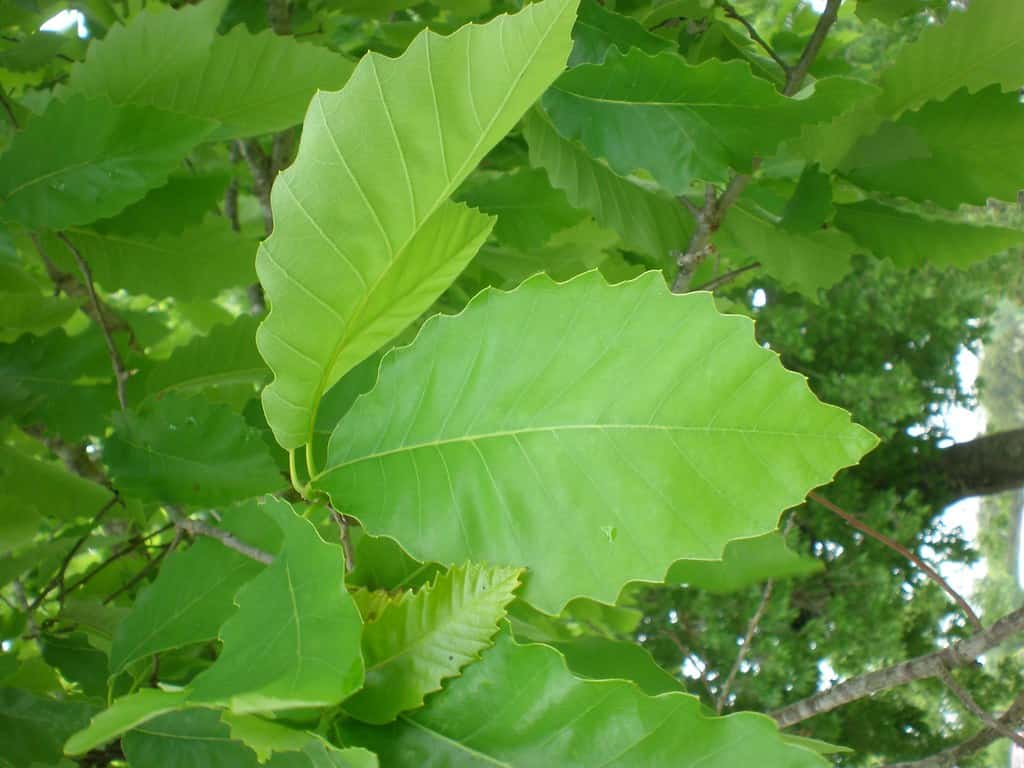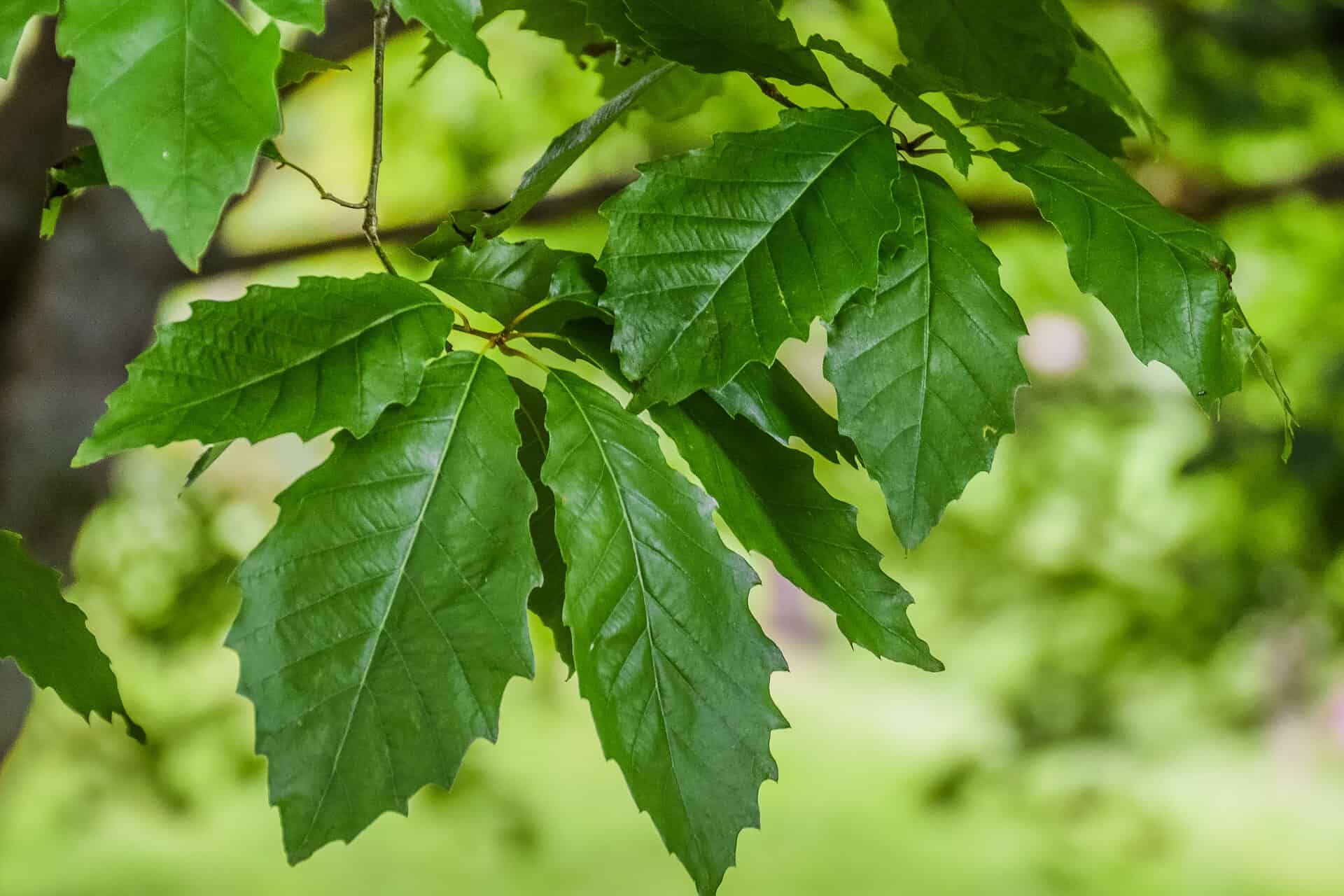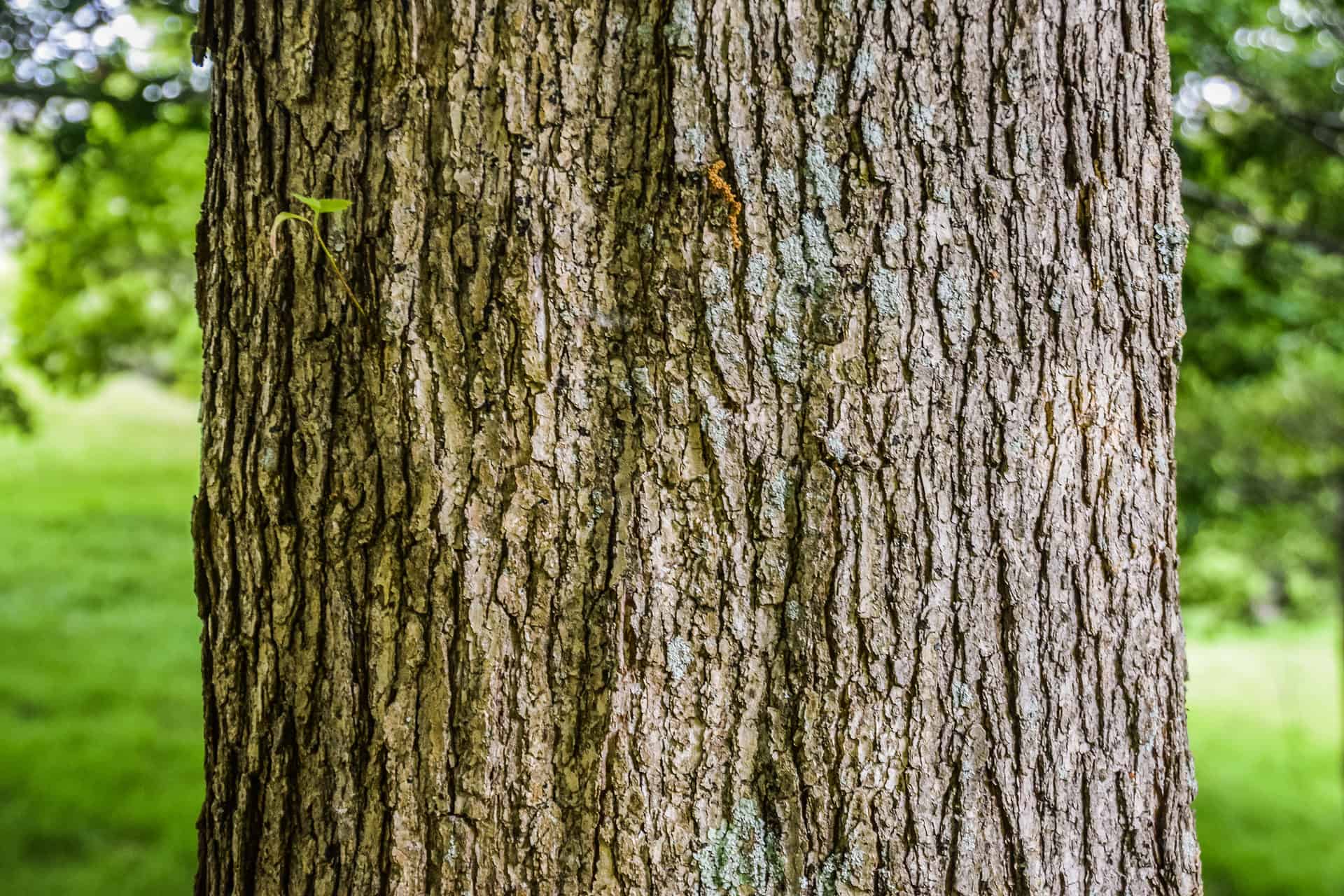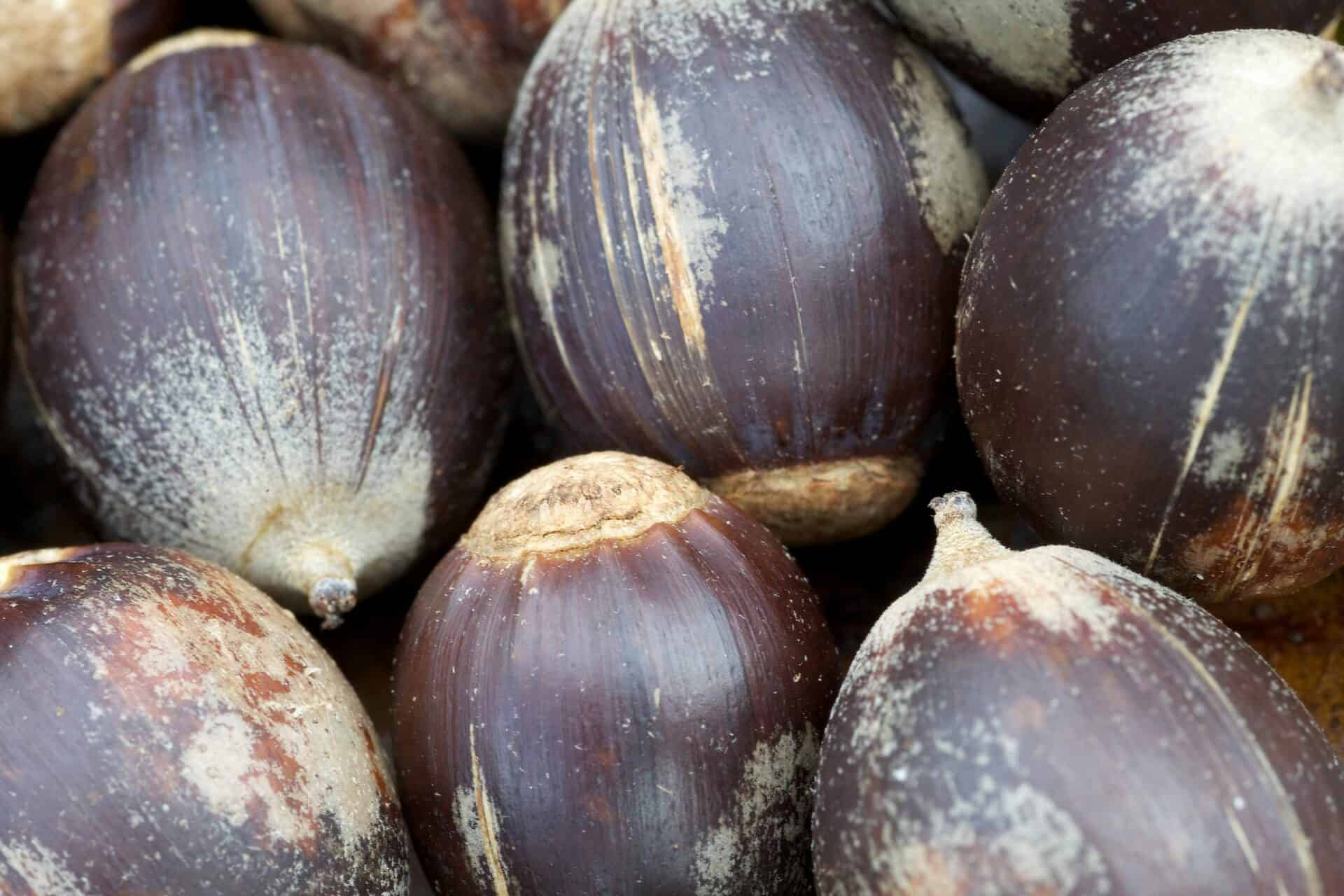No products in the cart.
The Chinkapin Oak is a great tree to have in the garden to provide shade. You can grow it as a specimen to cast its branches, adding color and shade to the landscape. The tree grows up to 60 feet tall and wide with a single deciduous trunk.
Still, before investing in one, we want to share some helpful tips on caring for this beautiful tree.
More About Chinkapin Oak
The Chinkapin Oak tree in the botanical world is known as the Quercus muehlenbergii. It makes for a great shade tree but is not commonly grown in the landscape as one, which is a pity. Why? The Chinquapin Oak, also called the Yellow Chestnut Oak, can grow in different climates.
They grow in limestone outcrops to dry bluffs and rocky to ridge south-facing slopes. Still, it would be best if you did not confuse yourself with the other oak species:
Allegheny (Castanea pumila)
Henry Chestnut (Castanea henryi)
Ozark (Castanea ozarkensis)
As mentioned, when the oak trees are young, they have a pyramid shape but become rounded when they mature. The tree has glossy narrow, leathery lance-shaped leaves. The edges of the leaf have toothed margins.
In spring and summer, the undersides of the leaves are pale green turning yellow, orange, and brown in fall. The tree has greenish male and female flowers similar to other chestnut trees. But it has female spikes with male catkins.
The female flowers develop into fruits known as oak acorns attracting local wildlife. It can take years for a tree to produce these nuts. The nuts start green and turn dark brown as it matures.
These acorns attract wildlife like rodents, raccoons, squirrels, and more to enjoy the flavor of the sweet acorns. People also harvest the acorns to roast or ground into flour, boiling and drying to remove the bitter tannins.
So, if you plan on eating the nuts, boil and dry them first.
Chinkapin Oak Tree Care

The Yellow Chestnut Oak is native to Central and North America. You can grow these oaks in the USDA hardiness zones 4 to 7. The most demanding part of the tree is transplanting them successfully.
The Quercus muehlenbergii grows a deep root system known as the taproot, and you buy them as balled or a bur-lapped tree. Also, when you buy the tree, ask if it is root-pruned, as it has a better chance of surviving.
You may see people advertising the tree as low maintenance, but we seem to disagree, as you will learn from the article.
The Best Soil Quercus Muehlenbergii
While you can grow the Yellow Chestnut Oak in different soil types, it prefers an alkaline soil of 5.0 to 8.2. It needs well-drained soil that is weak in acid. Here are some steps on how you can transplant your tree from a nursery stock:
You will receive your tree according to the hardiness zones at the planting time after the first frost date or before your last frost date in spring. These trees are in the dormant season at this time, making transplant shock minimal.
Next, choose a spot to accommodate your large Chinkapin Oak Tree away from utility and power lines. Also, consider your other outdoor plants, from shrubs to perennials, and how the tree will cast shade.
First, work the soil to a depth and width twice as deep and wide as the root ball or the container.
Remove any debris to wees and settle your tree at a depth as in the container. For your burlap-wrapped root ball, you must place the crown slightly above ground level where the trunk and roots meet.
Slowly backfill so that the trunk can stand straight. Next, make a ridge six inches a foot away from the trunk.
Then water well inside that ridge creates a moat. Tamp your soil and add some more to help restore it to ground level.
Water your tree for the next couple of weeks using the moat.
After a few weeks, you can smooth the moat out to apply mulch.
Lighting Needs for Chinkapin Oak

Your tree prefers full sun to shade and needs at least six hours of direct sun daily. Hence, choosing where you want to plant your tree is best to prevent relocation that can damage the taproot. When the tree is young, it can tolerate some shade but will lose that tolerance as it matures.
Watering Oak Trees
In the first year watering your Quercus muehlenbergii is essential, and according to Minnesota University and recommend you do the following:
Water daily for the first two weeks.
Water every two to three days for weeks three to twelve.
Then water as needed once a week, depending on the rainfall.
The rule is to water more as the trunk grows in diameter. For instance, if the trunk is three inches, it needs one and a half gallons of water. Your oak tree has some drought tolerance once it matures.
During a heatwave, it helps to use a soaker irrigation hose instead.
Temperature & Humidity
The Quercus muehlenbergii adapts easily to different clients and can even grow in freezing to warm and humid temperatures.

Fertilizer For Oak Chinkapin
The large shade tree does not always need fertilizing, but you can test the soil to see what nutrients the yellow oak needs. The best is not to fertilize when you plant indoors your Chinkapin Oak.
According to the University of Missouri, it is best to use a slow-release feed and not recommended at the planting time of your young tree. The reason is young trees need to establish themselves, and you do not want to encourage growth rate at this time.
The best is to wait at least a month before fertilizing your tree. You can then apply a light nitrogen-rich feed, and recommended to place it a foot away from the trunk to avoid root burn.
Pruning and Maintaining Your Oak Trees
As mentioned before, this is not a low-maintenance tree, as your landscape will end up with piles of leaves to oak acorns to rake up. Still, adding a chipper helps to create leaf mulch that helps with weed control.
In mid-spring, you can place a top dressing about 18 inches away from the trunk. We recommend an organic one like pine needles or leaf mulch that breaks down, providing nutrients to the soil. Then when early spring arrives, you can rake that composted top dressing away.
Next, you can apply your slow-release feed as per the package instructions. Then wait for the soil to dry before adding another layer of fresh, top dressing. The other important maintenance tip is to prune your tree as it grows.
It is best done in winter when it has no leaves present, as it is the dormant season. Doing this helps to allow for new growth. You can remove damaged, diseased, to dead branches.
You may find that when most oaks reach a mature size, you need to call in an arborist to help with tree pruning.
Propagation of Your Quercus Muehlenbergii
Chinkapin Oak grows with dark green coarsely toothed Chestnut leaves in alkaline soils to produce those edible acorns. Hence, the best way to propagate is the seed. You can use other methods like bud grafting or rooting stem cuttings, but they are not always successful.

So here are some steps to start your tree from an acorn.
Harvest your acorns in the fall and drop them into a bucket with water. When the nuts sink, you can plant them and discard the others that float.
Now, lay the seeds on their sides, cover them with an inch of soil and cover them with some mulch.
Keep the soil conditions moist but not soggy. It takes about six weeks for them to sprout.
Remove half of the mulch and leave the rest, if sown, in the ground for winter protection.
Keep it moist until the first frost, and discontinue watering until spring arrives.
You will see the seedlings sprouting again in the growing season. Once the frost danger passes, remove the mulch.
Then thin out the seedlings keeping your strongest ones to grow into young trees.
Chinkapin Oak Similar Trees
Unfortunately, you do not find Chinkapin Oak cultivars, but you can find a dwarf variety and a Chestnut oak. The two have similar growing conditions with Chestnut leaves and a fall color of yellow-green to orange-brown.
Common Pests & Plant Diseases
While your oak can live up to 100 years, it remains the home of pests and diseases you need to address. Some common insects are:
Acorn Weevils
Carpenter Worms
Columbian Timber Beetles
Gall-Forming Cynapids
Spongy Moth
Gypsy Moth
Acorn Moth Larvae
Filbertworm Moth
Orange Striped Oakworm
Two-Lined Chestnut Borers
Variable Oakleaf Caterpillar
White Oak Borers
In addition, common diseases and pathogens that cause problems are Anthracnose, Canker, Oak Leaf Blister, and Oak Wilt. The best is to use preemptive application of insecticides and fungicides.
Frequently Asked Questions
When you have a small tree, it grows at a moderate rate of 12 to 24 inches a year.
Unfortunately, the trees in the oak group are messy. You will see a display of dark green, coarsely toothed leaves changing color with fall color and acorns dropping to the ground.
Yes, the tree is native to Texas, and you can even find them growing in New England.
You can find the Quercus muehlenbergii or Chinkapin Oak at any local garden center. Alternatively, you can buy the tree here at Plantly to deliver it to your door.
Whether you want to buy, sell or simply reach out to other plant enthusiasts, Plantly is the right place to be!


